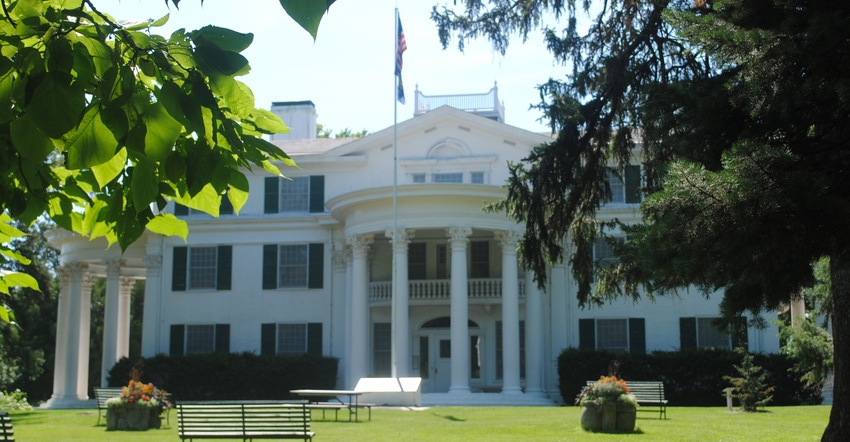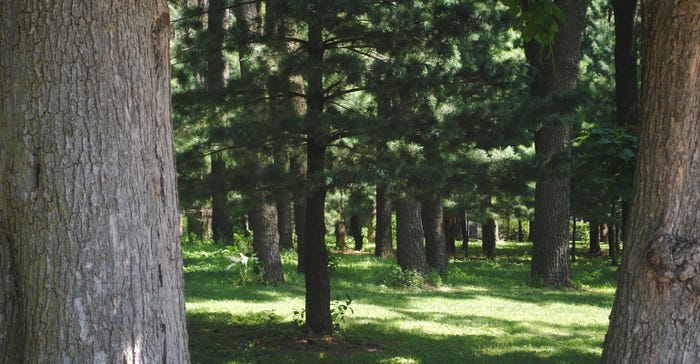
Earth Day, which began in 1970, gets more press. But its predecessor, Arbor Day — set aside to inspire people to plant trees — was established in Nebraska in 1872 by a Nebraska City newspaper editor and statesman.
Today, Arbor Day is celebrated in every state across the nation and around the world. However, unlike other specific celebrations, it takes place on different dates in different places.
1st in Nebraska
Not long after arriving in the newly established Nebraska Territory in 1854, Julius Sterling Morton and his new bride, Caroline, settled in a little village along the Missouri River called Nebraska City.
Morton became editor of the Nebraska City News. He served in the Nebraska Territorial House of Representatives, and in 1858, he was even appointed to serve as the secretary of the Nebraska Territory and as acting territorial governor.
Related: Virtual tour: Birthplace of Arbor Day
Coming from Michigan, one of the things Morton noted about the prairie was the lack of trees, except near waterways. He missed the orchards and forests of Michigan, so he and Caroline set out on a lifelong quest to plant trees and encourage the planting of trees across Nebraska and around the country.
On Jan. 4, 1872, at a meeting of the State Board of Agriculture, Morton proposed the idea of Arbor Day to spread the news about the value of tree planting on the prairie. He advocated strongly for civic groups and schoolchildren to take part in special Arbor Day planting festivities.
The first Arbor Day was held April 10, 1872, in Nebraska. Prizes were awarded for the greatest number of trees planted by civic groups, gatherings and individuals on that day.
1 million trees
It is estimated that more than 1 million trees were planted on that first Arbor Day in Nebraska. That was quite a feat considering the state’s population at that time was just shy of 123,000 people, according to the U.S. Census Bureau.
Another tree planting promoter, Nebraska Gov. Robert W. Furnas, officially proclaimed Arbor Day in 1874. By 1885, it was established as a legal state holiday and moved to April 22, Morton’s birthday. In those early days, Arbor Day was celebrated by schoolchildren, just as it is today. The festivities in Nebraska City often were marked by tree plantings, but also parades and a speech by Morton.

HISTORIC TREES: These are only a few of the trees planted at Arbor Lodge by the Morton family. As Morton said many times, a citizen does not necessarily plant trees for themselves, but more as a gift to the next generation.
Morton went on to serve as U.S. Secretary of Agriculture from 1893 to 1897 in President Grover Cleveland’s second term, serving farmers across the country and helping set up national forest preserves.
Over the years, Morton and his family built up his 72-acre estate in Nebraska City, aptly known as Arbor Lodge. The estate began as a four-room cabin, but grew over time into a 52-room mansion, surrounded by stately lindens, pines and other trees planted by the family over the years.
After Morton died in 1902, another addition was built by J. Sterling’s son, Joy, who was the founder of the Morton Salt Co. and who used the mansion as his summer home.
Celebrated everywhere
Today, Arbor Day is celebrated in every state and around the world, but at different times. The last Friday in April is the official national Arbor Day, as well as the Nebraska state Arbor Day designation — along with numerous other Midwest and Upper Great Plains states.
Because of the climate differences around the country, Texas and Hawaii celebrate the first Friday in November, while South Carolina celebrates the first Friday in December. Florida has Arbor Day in January, but North Dakota celebrates the first Friday in May, and Alaska celebrates the third Friday in May.
The idea of planting trees to improve the environment and make life more “livable” on the Plains and around the world is an ancient idea that Morton heartily promoted. A legacy followed, including Earth Day celebrations, as well as tree planting efforts such as the Clarke-McNary Act in the 1920s and the New Deal windbreak programs of the 1930s.
These programs provided for cooperation between the federal government and the states for furnishing seeds and plants for reforestation efforts. Tree planting by farmers, ranchers and landowners across Nebraska continues today, thanks in part to USDA Bessey Nursery at Halsey, and natural resources districts and their tree distribution and planting programs.
In an 1885 Arbor Day address, perhaps Morton spoke most eloquently about why tree planting is so important: “We place the roots of the infant tree in their bed of mould with serene and confident certainty that the sun and Earth will nourish, warm and quicken the sapling into the forest giant. Ours is an act of devotion to nature and the supreme law; it is faith expressed in a deed; and it is a deed which conveys health, happiness and consolation to generations not our own.”
Learn more about Morton and Arbor Day at arborday.org. Visit Arbor Lodge State Historical Park in Nebraska City or visit outdoornebraska.gov/arborlodge.
About the Author(s)
You May Also Like






